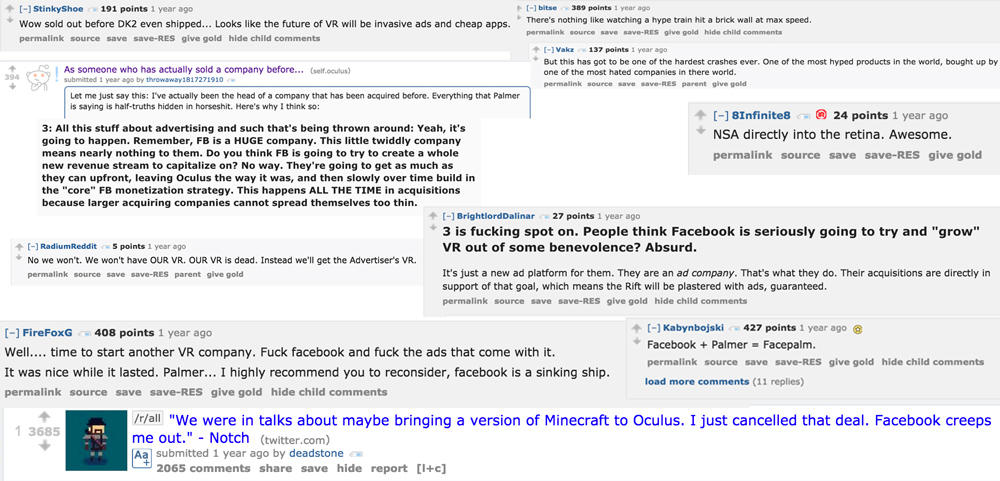When Facebook first acquired Oculus for $2.1bn last year there was initially a large amount of backlash from the VR community. The majority of the vitriol was spurned by the idea that the purchase would lead to the new medium being swarmed with socially directed advertising.

But it looks like the VR experience that Oculus and Facebook provide won’t be anything like Futurama’s pop-up riddled VR web – so long as developers choose not to make it that way.
“We aren’t doing anything with ads,” Palmer Luckey told me in an interview at Oculus Connect 2. “If [developers] are going to do that, they’re going to be doing that on their own.”
This comes on the back of a quote from the end of an interview CNN Money did with Andrew Bosworth, Facebook’s head of ads, which suggested that there would be ads on the platform. “That experience should include ads, because life includes ads,” Bosworth told CNN. That appears to not be the case, at least for now as, “there is no Facebook VR ads program in the works either” according to Luckey.
Luckey was careful not to rule out an official VR ads program in the future, but it is clear they aren’t going to be part of Oculus and Facebook’s present. Facebook VR ads “are something you can imagine down the road,” said Luckey, “but it’s so far from the front of our minds in terms of things we need to do.”
Oculus wants to allow developers to have the flexibility to choose “whatever business model they want in any game.” Luckey notes that we will likely see games adopt a variety of different strategies for monetization, “our goal isn’t to go out there and veto any one.”
Virtual reality is currently in the last moments of it’s pre-consumer state. It is like the mobile phone industry before the app store – lot’s of promise but no one clear way to monetize. It took years for developers to figure out the rules for monetization for mobile with free-to-play and microtransaction models which seized advantage of the on-the-go impulsivity of the medium.

Tommy Palm is one of the leaders in the mobile game monetization revolution, working as the games guru at King Digital and bringing Candy Crush to the masses. On the back of a strong fanbase and a free-to-play model Candy Crush has gone on to make over $850,000 a day. Palm, who now has his own VR game studio, thinks that these monetization methods will work well for VR. “It is ultimately a better business model for most consumers and developers,” he told UploadVR in an email interview, “however, I believe that the best business models are the ones that offer the most flexibility for the developers. What is true for one game is not always true for something else.”
While Oculus and Facebook aren’t officially developing an ad platform for VR, others are. Both Retinad and Mediaspike have made initial plays to build an advertising platform for VR – platforms that could potentially be supported by Oculus’ own analytics platform, which was teased at Oculus Connect this year. These third party advertising platforms will give developers an avenue for monetization, if ads are the way they choose to go.
“It’s not clear right now that advertising is the right model for virtual reality anyway,” said Luckey. “We are going to find out more from developers, I think.”
A lot remains to be seen about what strategies developers adopt to monetize in this new and evolving space. For now though, those strategies won’t involve official ad support from Facebook or Oculus.




























